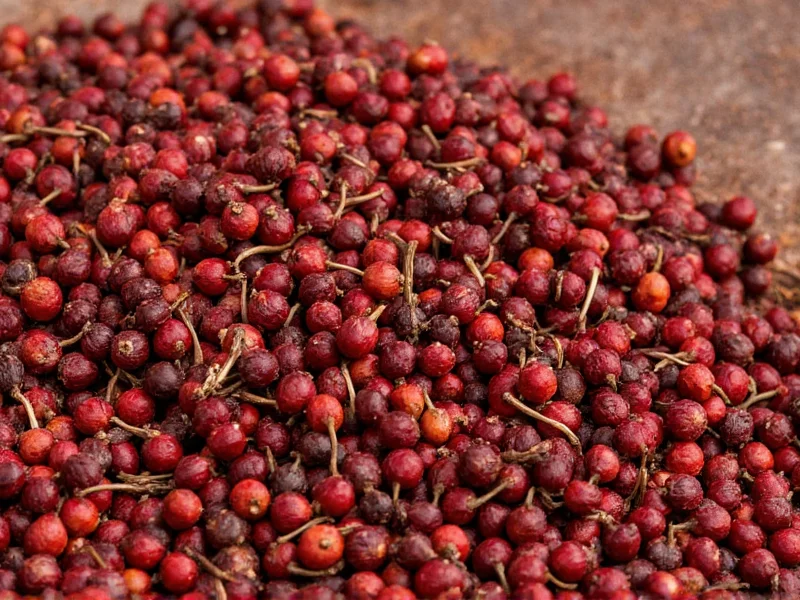Understanding spice terminology in Spanish is essential for anyone exploring authentic recipes or communicating in culinary settings across the Spanish-speaking world. Whether you're following a traditional Spanish recipe, shopping at a Latin American market, or discussing ingredients with Spanish-speaking chefs, using the correct terminology ensures clarity and authenticity.
Breaking Down the Translation
The Spanish phrase clavos de olor molidos consists of three key components:
| Spanish Term | Literal Translation | Meaning in Culinary Context |
|---|---|---|
| Clavos | Nails | Refers to the nail-like shape of whole cloves |
| de olor | of scent | Indicates the strong aromatic quality |
| molidos | ground | Specifies the powdered form of the spice |
Regional Variations Across Spanish-Speaking Countries
While clavos de olor molidos is universally understood, some regional variations exist:
- In Spain and most Latin American countries, clavos de olor is the standard term
- In some Caribbean regions, you might hear clavos used alone
- Mexico occasionally uses clavo molido (singular form) in casual conversation
- Puerto Rico sometimes refers to them as clavitos in certain contexts
For formal recipes, cooking classes, or grocery shopping, clavos de olor molidos remains the most precise and widely accepted spanish translation for ground cloves across all regions.
Using Ground Cloves in Spanish Recipes
When following authentic Spanish or Latin American recipes, you'll encounter ground cloves in various contexts:
- Arroz con leche (Spanish rice pudding) - typically calls for una pizca de clavos de olor molidos (a pinch of ground cloves)
- Pollo al ajillo (garlic chicken) - may include media cucharadita de clavos de olor molidos (half teaspoon of ground cloves)
- Empanada fillings - often specify clavos de olor molidos al gusto (ground cloves to taste)
- Traditional mole sauces - require precise measurements of clavos de olor molidos for authentic flavor
Understanding these spanish cooking terms for spices ensures you follow recipes accurately and achieve authentic results. Many novice cooks make the mistake of confusing clavos de olor with canela (cinnamon) or comino (cumin), which creates dramatically different flavor profiles.
Pronunciation Guide for Spanish Spice Vocabulary
Proper pronunciation helps when shopping or discussing ingredients:
- Clavos de olor molidos: KLAH-vohs deh oh-LOOR moh-LEE-dohs
- Clavo molido: KLAH-voh moh-LEE-doh (singular form)
- Media cucharadita: MEH-dee-ah koo-CHAH-rah-DEE-tah (half teaspoon)
- Una pizca: OO-nah PEES-kah (a pinch)
When ordering at a mercado (market), you might say: "Por favor, necesito clavos de olor molidos para cocinar" (Please, I need ground cloves for cooking).
Common Mistakes to Avoid
Many English speakers make these errors when using the spanish translation for ground cloves:
- Confusing clavos de olor with clavos (nails) - without de olor, it refers to hardware nails
- Using molido instead of molidos when referring to the plural form
- Mistaking clavo for clavo de olor - the latter is the complete term
- Translating literally as clavos molidos de olor (incorrect word order)
Remember that in Spanish, adjectives typically follow nouns, so molidos comes after clavos de olor. This proper structure is essential for clear communication when discussing spanish spice vocabulary for cooking.
Related Spanish Spice Vocabulary
When working with ground cloves in Spanish recipes, you'll often encounter these related terms:
| English | Spanish | Literal Translation |
|---|---|---|
| Whole cloves | Clavos de olor enteros | Cloves of scent whole |
| Clove powder | Polvo de clavo | Powder of clove |
| Clove oil | Aceite de clavo | Oil of clove |
| Ground cinnamon | Canela molida | Ground cinnamon |
| Ground nutmeg | Nuez moscada molida | Musk nut ground |
Mastering these translations helps you navigate authentic Spanish-language cookbooks and communicate effectively in Hispanic markets. The precise spanish cooking terms for spices make a significant difference in both understanding recipes and purchasing the correct ingredients.











 浙公网安备
33010002000092号
浙公网安备
33010002000092号 浙B2-20120091-4
浙B2-20120091-4